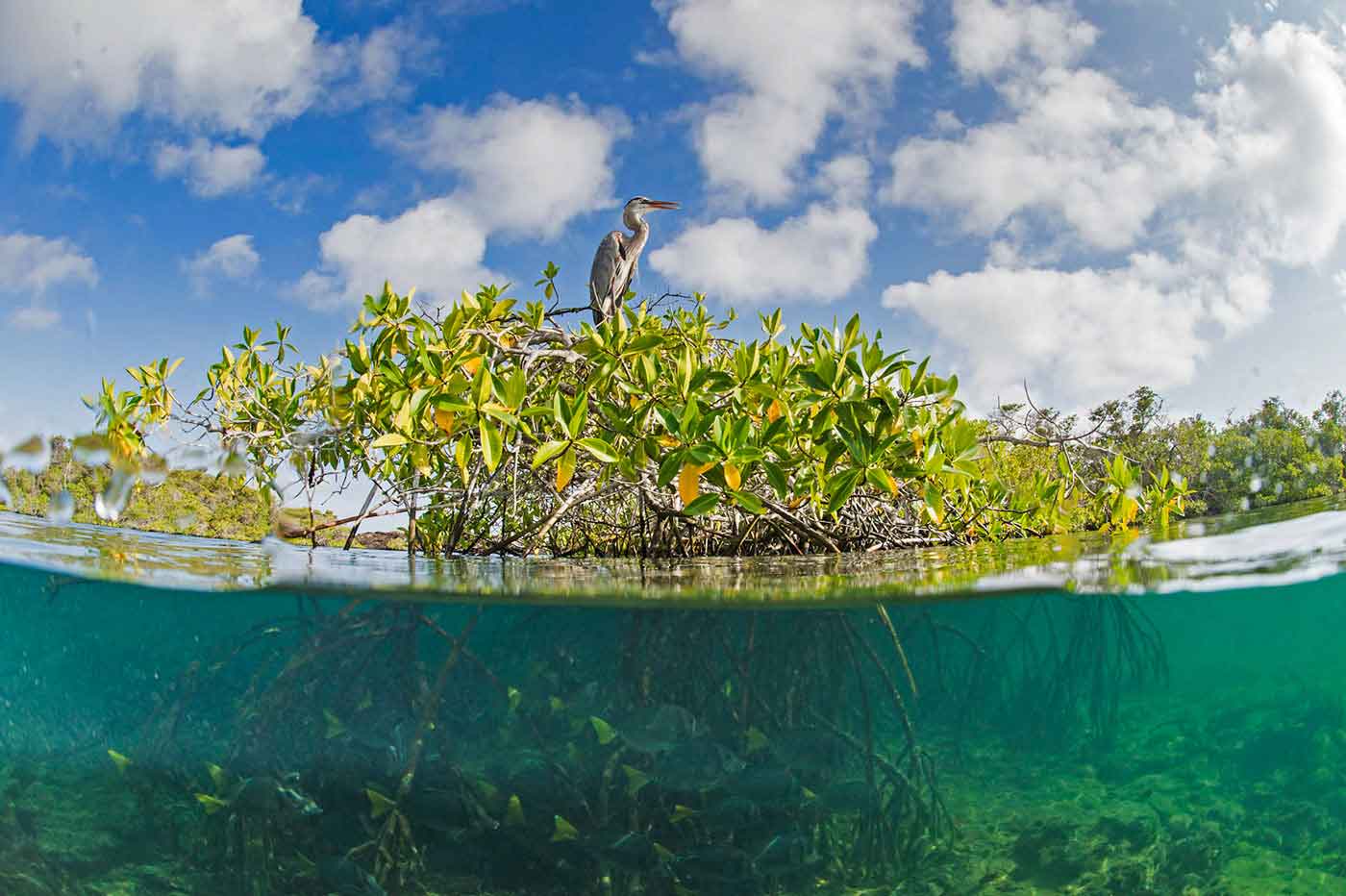
Blue Carbon and Mangrove Conservation
A Natural Climate Solution
Avoiding deforestation and degradation of mangroves in Mexico can prevent the emission of at least 10.8 million MgCO2 and reduce 12% of CO2 emissions caused by land use changes by 2030.
WILDCOAST is undertaking an innovative project with the Mexican government to conserve Northwest Mexico's vast mangrove forests. New research shows that Blue Carbon ecosystems like mangroves are among the most efficient carbon sequestering ecosystems known today. Unfortunately, they are among the fastest disappearing ecosystems on the planet.
Thanks to recent breakthroughs in the sphere of nature-based emissions reductions, proper protection and management of these ecosystems has become a cornerstone of Mexico's pledge in the Paris Agreement to combat climate change. WILDCOAST, through the Blue Carbon Initiative, is helping Mexico solidify itself as a global leader in achieving natural climate solutions like mangrove forest protection.
Why focus on Blue Carbon?
Mangroves offer a vast array of high-impact ecosystem services such as buffering coastal communities from powerful storms and sea level rise, providing critical habitat for keystone species, filtering pollutants, and absorbing atmospheric carbon. In fact, due to the ability of their complex root systems to store carbon deep underground, scientists have discovered that mangroves, and particularly desert mangroves like those in Northwest Mexico, can sequester more carbon per unit area than almost any other plant species on the planet. Therefore, rather than relying solely on traditional ecosystems like rainforests to pull carbon our of the atmosphere, we can shift focus towards coastal and marine ecosystems such as mangrove forests, seagrass beds, coral reefs, kelp forests and salt marshes with the potential to offer abundant ecosystems services, including the high-volume uptake of carbon.
WILDCOAST, in partnership with Mexico's National Commission for Protected Natural Areas and Secretariat of the Environment and Natural Resources, is undertaking a comprehensive project to conserve mangroves. Between now and 2030, the conservation of mangrove forests within the Project area will prevent emissions equivalent to half of Baja California Sur's carbon dioxide emissions from industrial and transportation activities in the same period.
Steps to the Blue Carbon Initiative:
1. Set aside mangrove forest area as protected through conservation concession or other mechanism
2. Quantify carbon sequestered and stored in protected mangrove areas
3. Obtain voluntary carbon market accreditation
4. Sell carbon offsets in the voluntary emissions reductions market
5. Use funds to reinvest in mangrove area management and purchase future conservation concessions

